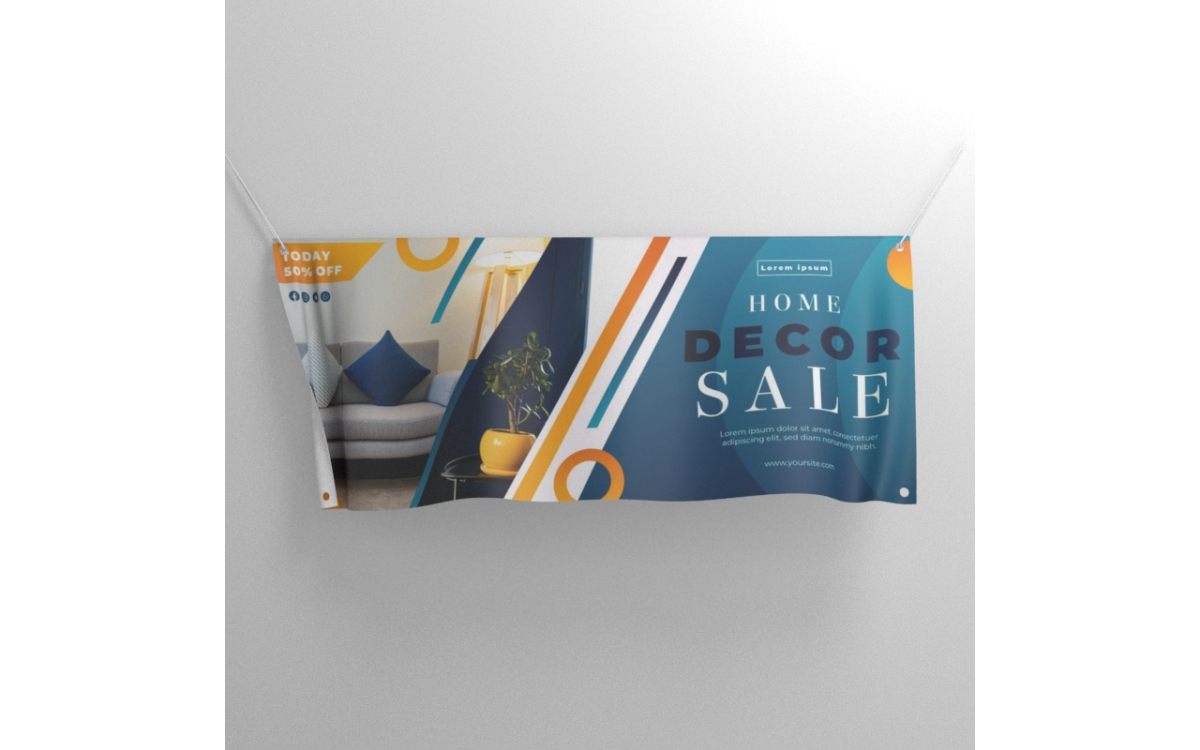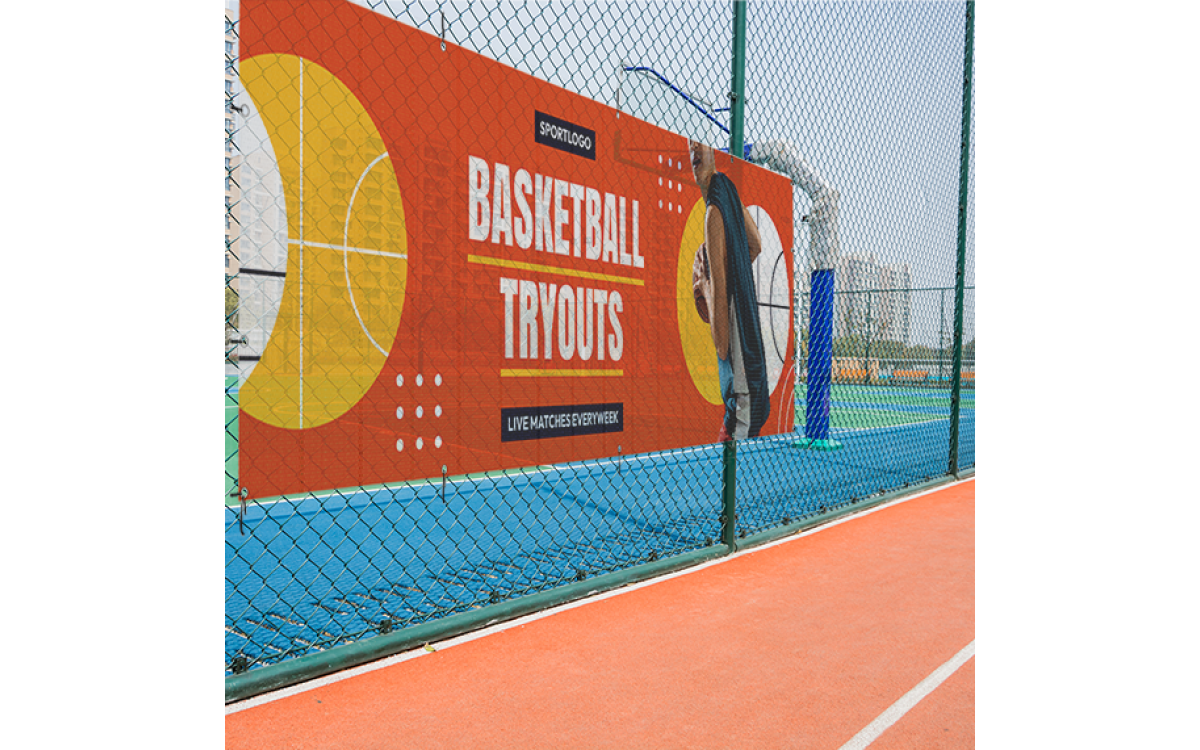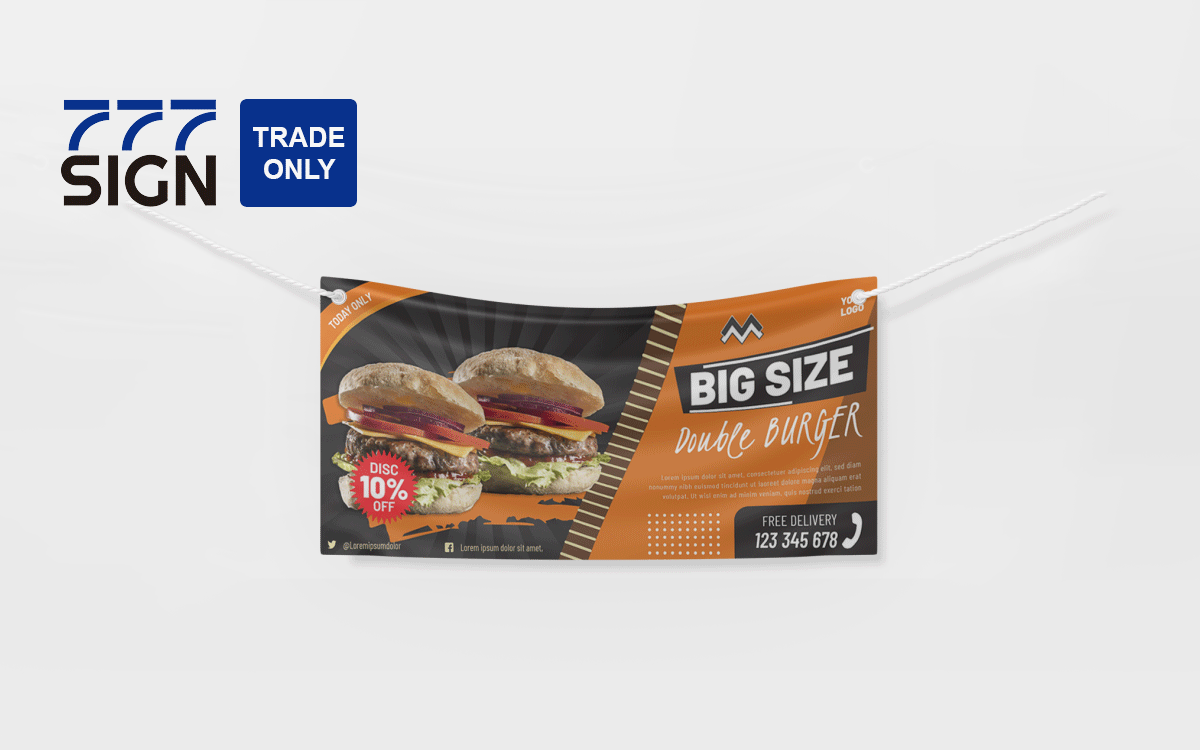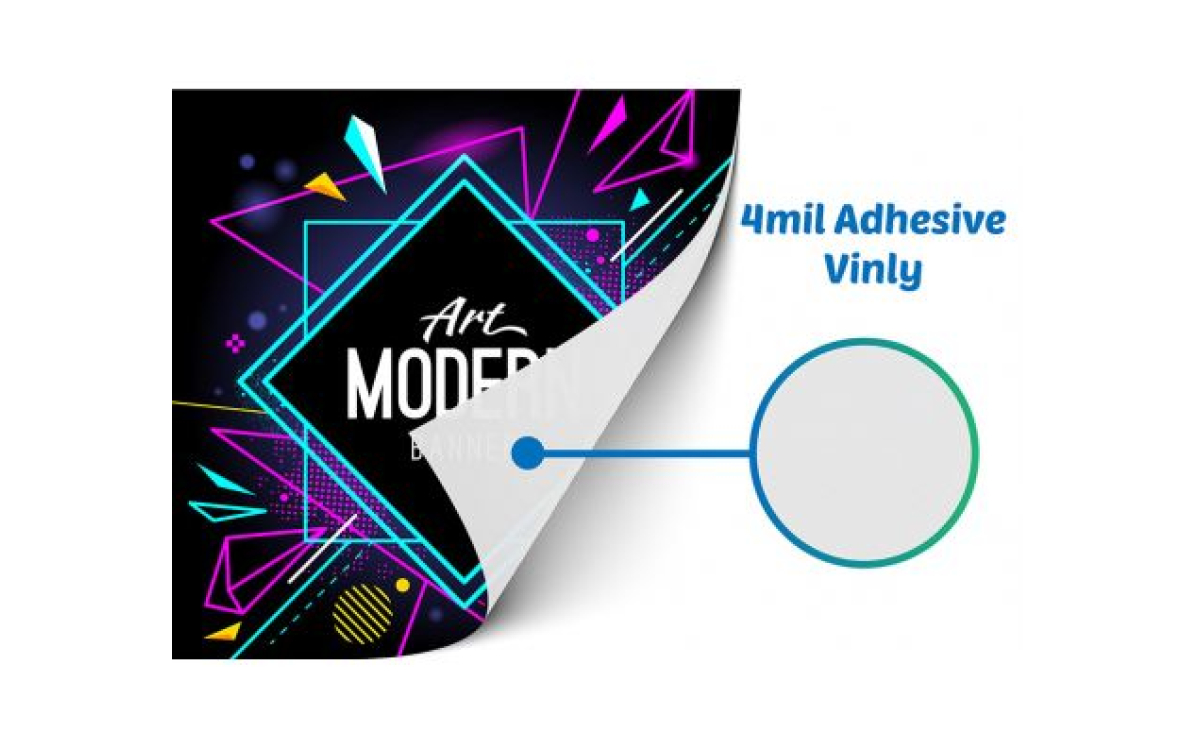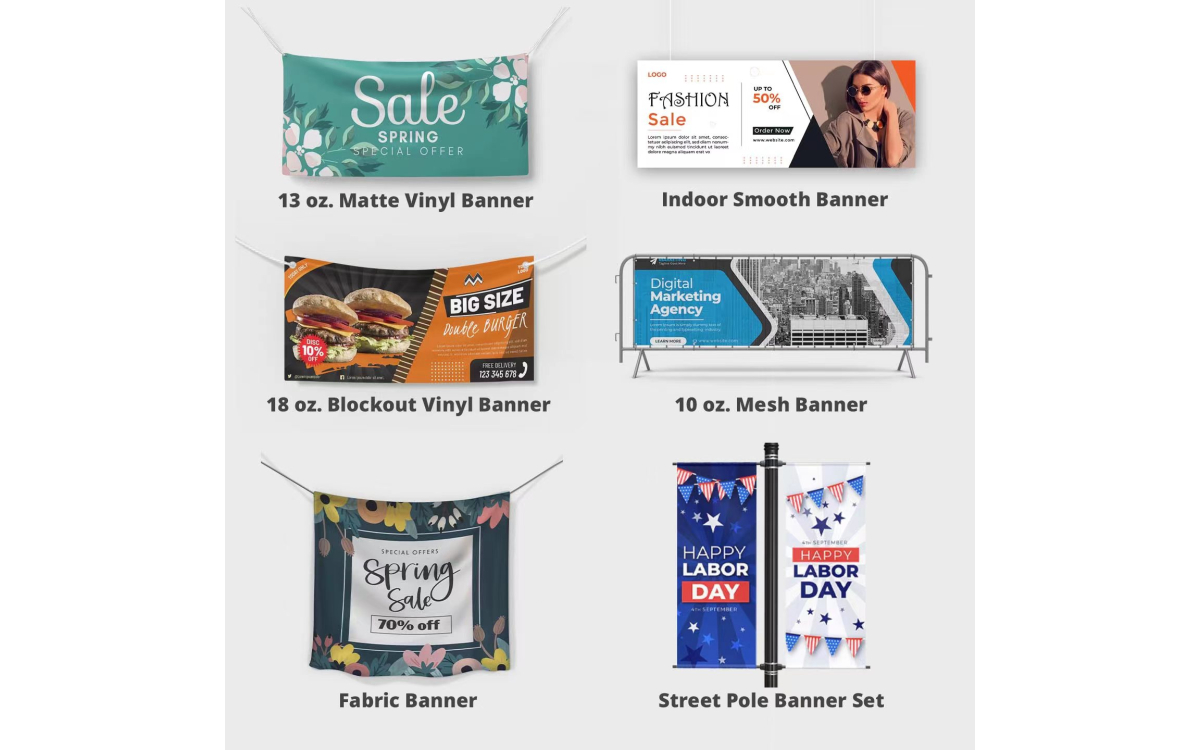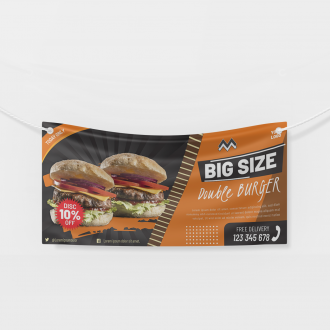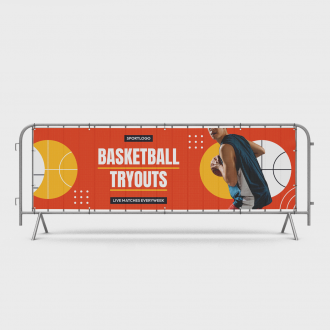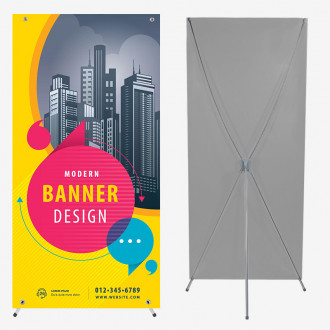A vinyl banner is a type of large-format printed sign made from a durable, flexible material called vinyl. Vinyl banners are commonly used for outdoor advertising and promotional purposes. They are designed to be weather-resistant and are suitable for both indoor and outdoor applications.
What type of vinyl is used for banners?
Vinyl banners are typically printed using large-format digital printers that can produce high-resolution images and graphics. The material used for vinyl banners is usually a PVC (polyvinyl chloride) vinyl, which is known for its durability and longevity. This type of vinyl is resistant to fading, tearing, and damage from exposure to the elements, making it suitable for long-term outdoor use.
What are vinyl banners for?
Vinyl banners are versatile and can be used for a wide range of applications, such as promoting businesses, announcing events, advertising sales or promotions, displaying sponsor logos at sports events, and more. They are commonly used in trade shows, conferences, festivals, retail stores, construction sites, and other locations where a large, attention-grabbing sign is needed.
Vinyl banners offer an affordable and effective advertising solution due to their durability, visibility, and ease of installation. They are a popular choice for businesses and organizations looking to make a big impact with their outdoor advertising efforts.
Types of Vinyl Banners
There are several types of vinyl banners available, each suited to different applications and environments. Here are some common types of vinyl banners:
Standard Vinyl Banners: These are the most commonly used vinyl banners and are suitable for a wide range of indoor and outdoor applications. They are typically made from a 13 oz vinyl material and offer a good balance between durability, cost-effectiveness, and print quality.
Heavy-Duty Vinyl Banners: These banners are made from a thicker and heavier vinyl material, usually 18 oz or more. They are designed for more demanding environments where extra durability is required, such as in windy or harsh weather conditions. Heavy-duty vinyl banners are commonly used for outdoor banners, construction site banners, or long-term outdoor signage.
Mesh Banners: Mesh banners are made from a perforated vinyl material that allows wind to pass through. They are ideal for outdoor applications where wind resistance is a concern, such as large building wraps or fence banners. The perforations in the material also provide visibility, allowing some light to pass through, which can be advantageous for certain applications.
How to decide which type of vinyl banners to use?
When it comes to choosing the weight of the vinyl material, the decision depends on the specific requirements of your project. Here are some factors to consider:
- Durability: Heavier weight vinyl banners are generally more durable and better suited for long-term outdoor use or areas with high wind conditions. They are less likely to tear or get damaged.
- Portability: Lighter weight vinyl banners are easier to transport and handle, which can be advantageous if you need to frequently move or install the banners in different locations.
- Budget: Typically, heavier weight vinyl banners are more expensive than lighter weight ones. Consider your budget and the expected lifespan of the banner when making your decision.
What are the best vinyl banner sizes?
Vinyl banners come in various sizes, ranging from small sizes for retail displays to large sizes for billboards or building wraps. They can be customized with vibrant colors, high-quality images, and text to effectively convey messages and attract attention. Many vinyl banners also feature reinforced hems and grommets, which allow for easy hanging and installation using ropes, bungee cords, or other hardware.
When it comes to choosing the size of the vinyl banner, consider the following best practices:
Location and Visibility: Determine where the banner will be placed and the distance from which it needs to be visible. This will help you determine the appropriate size to ensure that your message can be seen clearly by your target audience.
Content and Design: Consider the amount of text, images, and graphics you want to include on the banner. Ensure that the size allows for the content to be legible and visually appealing without appearing crowded or overwhelming.
Installation Options: Consider the available installation options and the space where the banner will be displayed. Ensure that the size of the banner fits the intended space and that it can be securely installed without being obstructed or causing any safety concerns.
Budget: Larger banners tend to cost more than smaller ones. Consider your budget and weigh it against the desired size to ensure a balance between impact and affordability.
How much does a vinyl banner cost?
The cost of a vinyl banner can vary depending on several factors, including the size, material quality, design complexity, finishing options, and quantity ordered. Here are some general retail price ranges to give you an idea:
- Small-sized vinyl banners (2 ft x 4 ft or smaller) can range from $20 to $100.
- Medium-sized vinyl banners (4 ft x 6 ft to 6 ft x 10 ft) typically cost between $75 and $200.
- Large-sized vinyl banners (larger than 6 ft x 10 ft) can range from $150 to $500 or more.
These price ranges are estimates and can vary significantly based on the factors mentioned above. Additional costs may apply if you choose specialty materials, custom finishing options (such as pole pockets or wind slits), or if you require graphic design services.
It's worth noting that bulk orders or repeat orders may qualify for volume discounts, so if you need multiple banners or plan to order banners regularly, it's worth discussing pricing options with the printing company or supplier.
To get accurate pricing, it's best to contact local printing companies or online printing services for quotes. They will be able to provide you with specific pricing based on your requirements, including size, quantity, material, and any additional options you may need.
Remember that while price is an important consideration, it's also essential to consider the quality of the materials and printing, as well as the reputation and reliability of the printing company. You want to ensure that you're getting a durable and professionally printed vinyl banner that will effectively serve its purpose and withstand outdoor conditions if needed.
How to install vinyl banners?
Installing vinyl banners is relatively straightforward and can be done using a variety of methods. Here are some common installation techniques for vinyl banners:
1. Hanging with Ropes or Bungee Cords: This is a simple and commonly used method. Start by attaching ropes or bungee cords to the grommets (metal eyelets) on the corners and along the edges of the banner. Then, secure the ropes or bungee cords to hooks, posts, or other anchoring points. Make sure to tighten the ropes or bungee cords adequately to keep the banner taut and prevent it from sagging or flapping in the wind.
2. Pole Pocket Installation: Some vinyl banners come with pole pockets, which are sleeves sewn into the top and bottom edges of the banner. To install using this method, insert a rigid pole or pipe through the top pole pocket, then attach ropes or bungee cords to the pole ends and secure them to a structure or posts. For banners with a bottom pole pocket, repeat the process using a second pole.
3. Zip Ties or Cable Ties: For temporary installations or when attaching banners to fences or other structures, zip ties or cable ties can be used. Insert the ties through the grommets on the banner and secure them tightly around the structure, making sure to leave enough tension to keep the banner in place.
4. Suction Cups: If you are installing a vinyl banner on a smooth, non-porous surface such as glass or metal, suction cups can be used. Attach suction cups to the corners or along the edges of the banner, then press them firmly against the surface to create a secure hold.
5. Banner Frames or Stands: For indoor installations or situations where a freestanding display is required, banner frames or stands can be used. These frames typically have adjustable legs or supports that hold the banner taut and upright. The most popular banner stands include retractable stands, X Stands, and table-top stands.
Before installing the vinyl banner, make sure to thoroughly inspect the installation area and ensure that it is clean, dry, and free of any obstacles that could interfere with the installation process. Also, take safety precautions when working at heights or in areas with heavy foot traffic.
It's important to follow the specific installation instructions provided by the banner manufacturer or seek professional assistance if needed. Proper installation will help ensure that your vinyl banner is securely in place, visible, and effectively conveys your message or advertisement.


